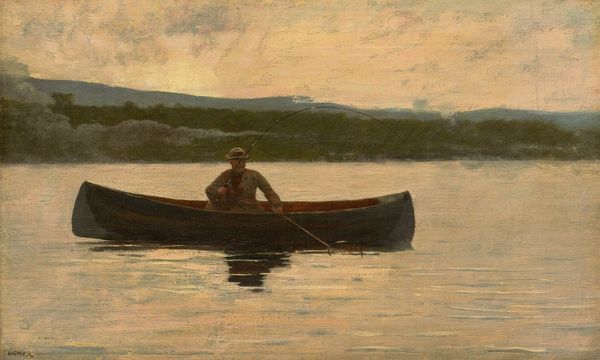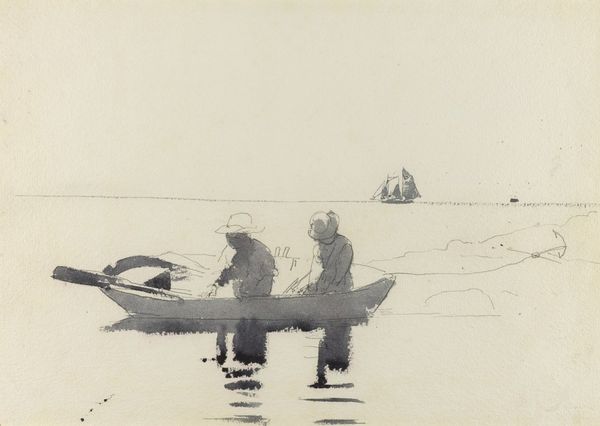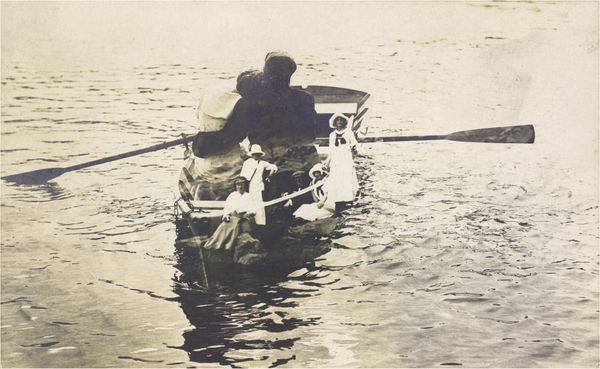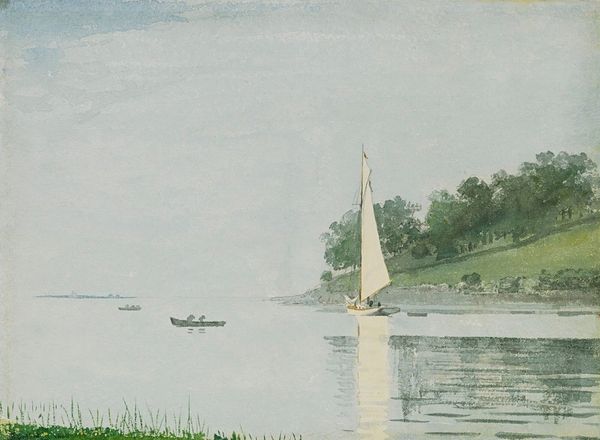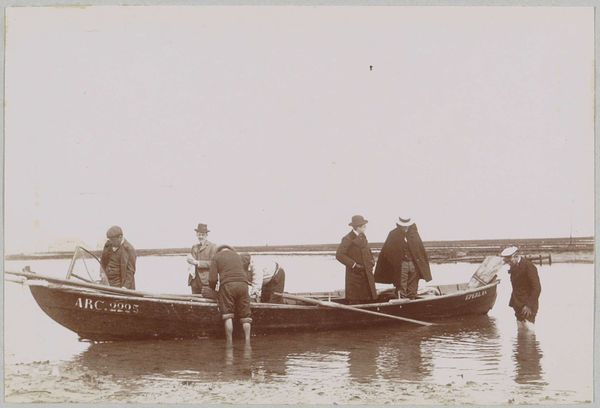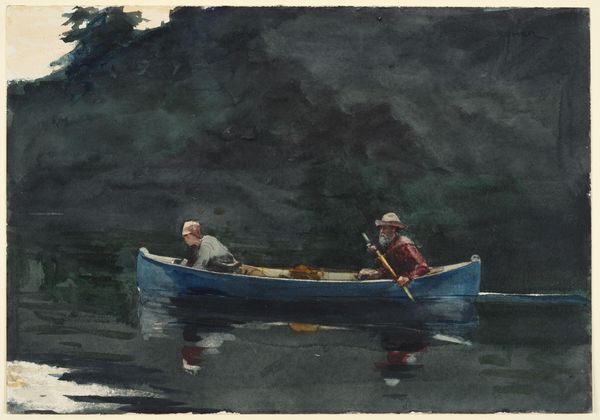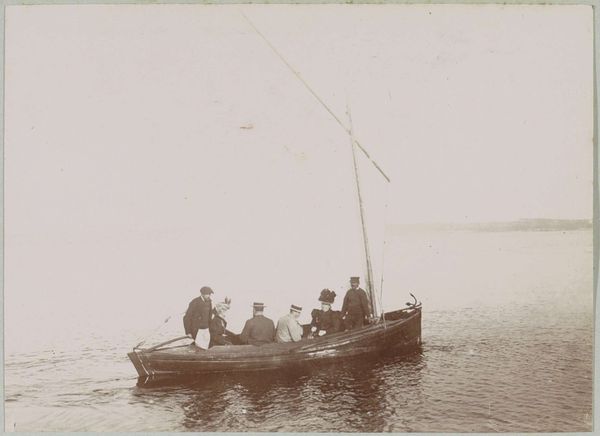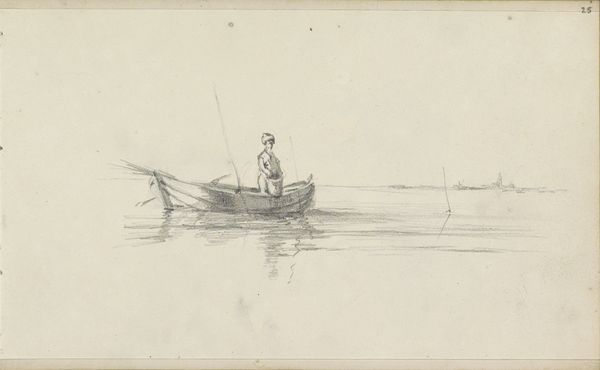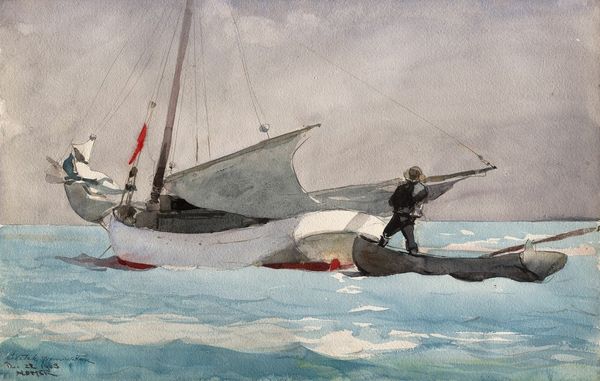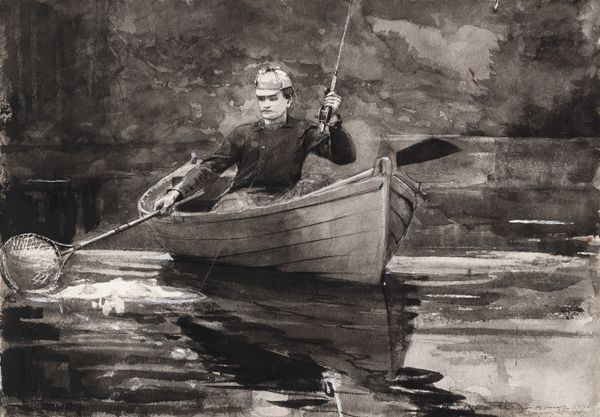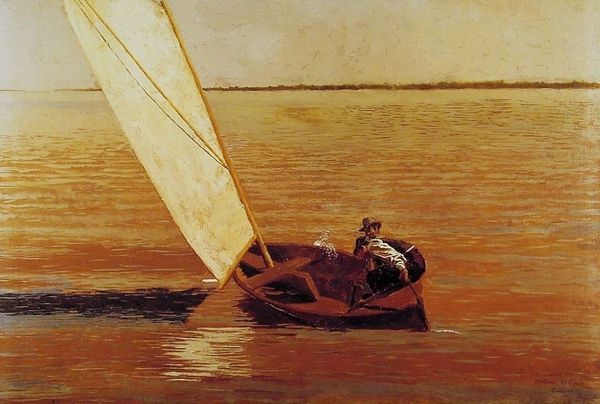
Dimensions: 54 x 96 cm
Copyright: Public domain
Curator: Here we have Frits Thaulow's "Alkejegeren", painted in 1892. It roughly translates to Auk Hunter. Editor: The overwhelming sense is of quietude, isn't it? All that muted, shimmering light on the water. I am immediately drawn to the visible texture. The brushstrokes seem deliberate and unblended. Curator: Thaulow was a leading figure in Norwegian naturalism. He really promoted plein-air painting – creating art outdoors. This piece captures a scene reflecting the everyday life of coastal Norway. Thaulow helped foster artistic communities too. Editor: Yes, and looking closely, you can practically feel the physicality of oil paint on canvas here. Note how Thaulow uses impasto in areas to describe the light catching the ripples and movement of the water and also in areas to create the subtle changes of depth in the boat. One really sees the labour in this, and considers that labour. Curator: The subject also speaks to changing cultural dynamics. Hunting was a vital economic activity. But representations of labor, especially manual labor, were becoming more popular in art. Thaulow isn't just painting a pretty scene; he's representing a specific way of life, which, from a cultural perspective, could signal deeper socio-economic shifts. Editor: Considering the conditions, the work is fascinating. Can you imagine working on that scale, on the water in 1892. It's also an impressive depiction of the relationship between man and the ocean. He isn’t romanticizing nature, the fisherman, the small boat, or the act of working; Thaulow portrays it quite simply and serenely. Curator: Yes, but in the social context, one must wonder what type of market this art appealed to and consider what it represented and communicated within the burgeoning class structures of that era. What value was there to those who may have purchased it. Editor: Well, regardless, there’s a stark elegance here. That solitary figure… I imagine he must have faced profound hardships making a living at the whims of that ever-shifting North Sea. Curator: Thaulow presents a specific point of view regarding nature and humanity. "Alkejegeren" prompts me to contemplate not only the skill and art, but the circumstances and narratives of everyday existence that formed art at that historical moment. Editor: Exactly. You begin to consider not only art history, but human histories. The textures of that past become more tangible through work like this.
Comments
No comments
Be the first to comment and join the conversation on the ultimate creative platform.
